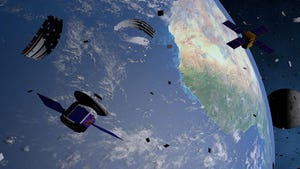
Space Force Tracks Debris After Secretive Russian Satellite Breaks Up in Orbit - CNET
The space junk problem just keeps getting worse. A Russian satellite known as Cosmos 2499 (sometimes referred to as Kosmos-2499) has broken up in orbit, creating dozens of new pieces of debris that will need to be tracked and avoided by spacecraft and other satellites.
The 18th Space Defense Squadron, part of the US Space Force, tweeted on Monday that it had confirmed the breakup of 2499 on Jan. 4. “Tracking 85 associated pieces at est 1169 km altitude – analysis ongoing,” the squadron said.
#18SDS has confirmed the breakup of COSMOS 2499 (#39765, 2014-028E) – occurred Jan 4, 2023 at appx 0357 UTC. Tracking 85 associated pieces at est 1169 km altitude – analysis ongoing. #spacedebris #space @SpaceTrackOrg @US_SpaceCom @ussfspoc
— 18th Space Defense Squadron (@18thSDS) February 7, 2023
Cosmos 2499 was an enigmatic satellite. Russia quietly launched it in 2014 with an unknown purpose. Orbital Focus, a hobbyist site that covers space events and tracks satellites, logged a previous notable breakup event for Cosmos 2499 in late 2021 that created 22 pieces of trackable debris.
Russian space equipment has been involved in a series of orbital-junk snafus in recent years. The defunct Cosmos 2361 satellite and an old Russian rocket body had a worrisome near-miss in January. The US condemned a “reckless” 2021 Russian missile test that destroyed a satellite and created over 1,500 new pieces of orbital debris.
Cosmos 2499’s disintegration is one more reminder of just how crowded it is in orbit as defunct gear clogs up space around Earth. Rocket parts, tiny bits of broken satellites and other junk pose a danger to functioning spacecraft. The International Space Station has to periodically dodge debris to stay safe. Researchers are looking at ways to reduce and remove space junk, but it’s slow going. In the meantime, there are more pieces to add to the orbiting junk pile.

